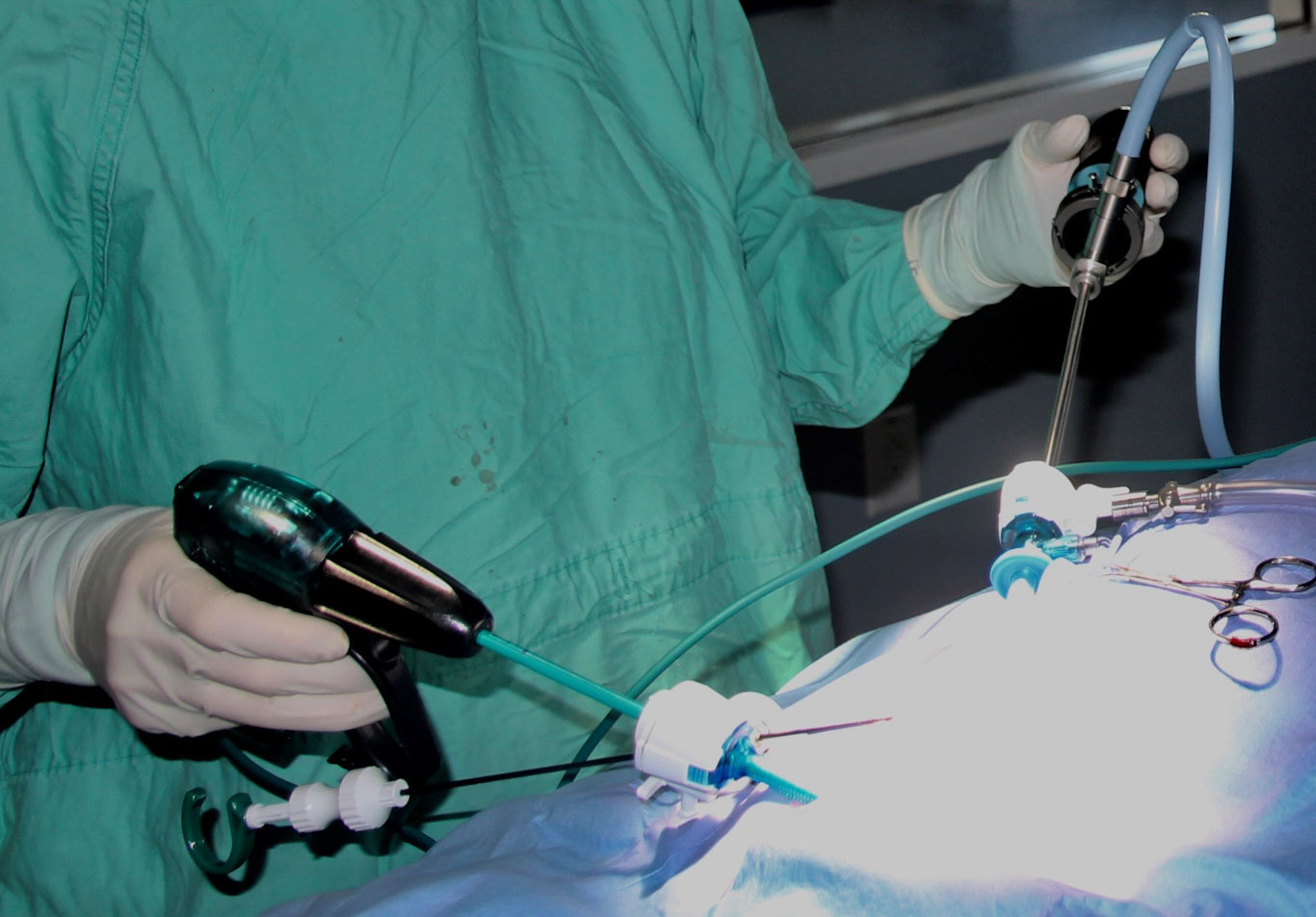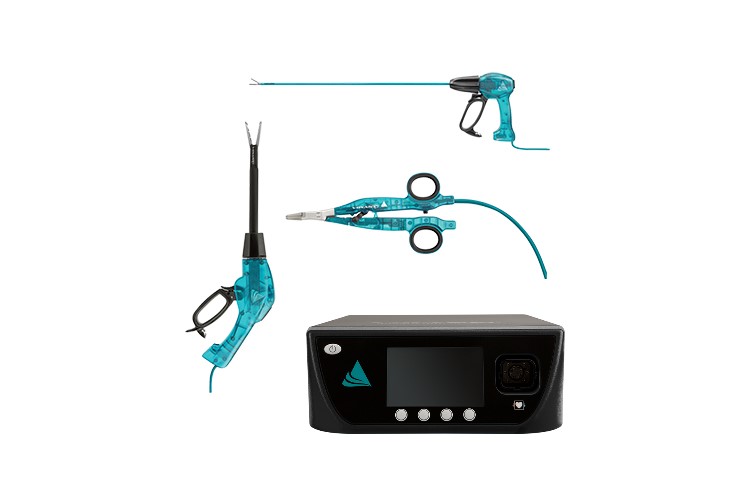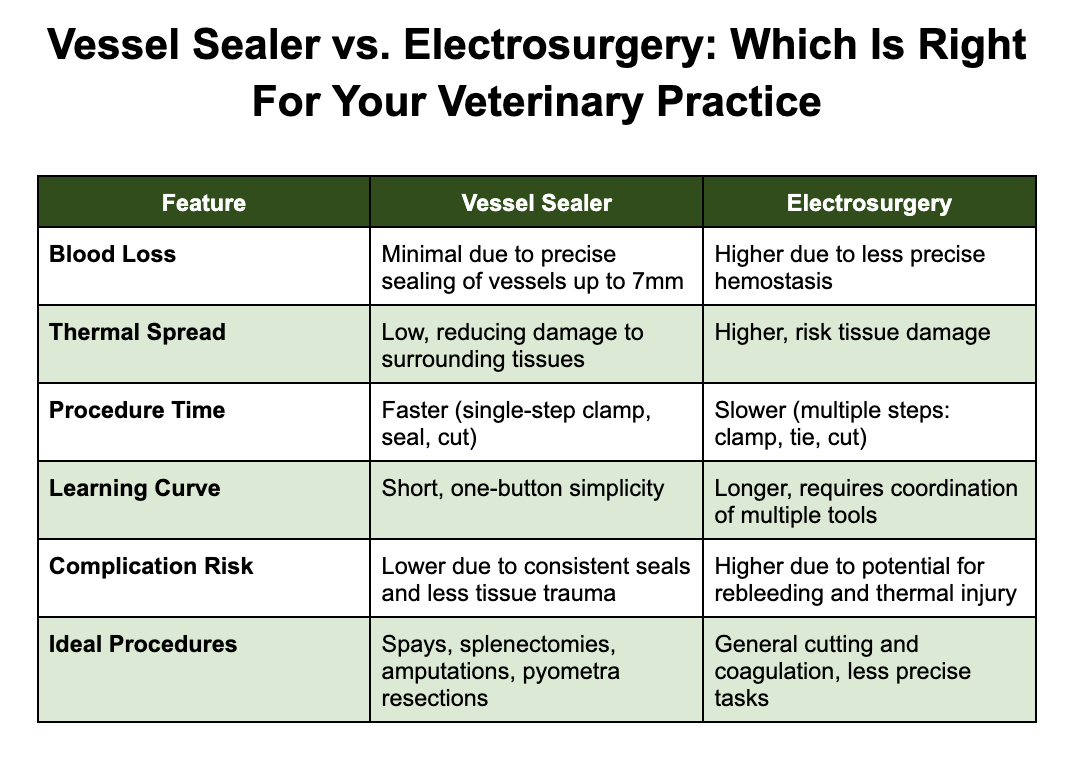
In veterinary soft tissue surgery, precision and efficiency are critical. From routine spays to complex procedures like pyometra resections, the right tools can transform outcomes for patients, staff, and clinic profitability. Enter vessel sealers—advanced surgical devices that reduce blood loss, streamline workflows, and elevate patient care. Here’s why veterinarians are making vessel sealers the standard in their operating rooms.
What Is a Veterinary Vessel Sealer?

A vessel sealer used by veterinarians uses bipolar radiofrequency energy and precise pressure to seal and transect blood vessels in one seamless step. Unlike traditional electrosurgery, which relies on heat and multiple instruments (clamps, ligatures, scissors), vessel sealers integrate sealing and cutting into a single motion. This reduces instrument passes, minimizes thermal spread, and enhances surgical efficiency.
Key features include:
- Precise energy delivery to target tissue, sparing surrounding structures.
- Reliable sealing for vessels up to 7mm, ideal for vascular procedures like splenectomies.
- Integrated cutting blade for faster, cleaner transections.
“The vessel sealer is a game-changer. I wouldn’t practice without it.”
- Dr. T., VetOvation Client
How Veterinary Vessel Sealers Reduce Blood Loss
Excessive bleeding during surgery can complicate procedures and endanger small animal patients. Think of it this way: Traditional spays in large dogs for example can pose challenges, especially with suture ligation of blood vessels. Vessel Sealers help veterinarians manage the more difficult to reach vessels, and ensures effective hemostasis while eliminating the chance of the slipping of ligatures. This provides a safer and quicker procedure for the patient.
A few additional ways that vessel sealers help veterinarians are:
- Minimizing thermal damage to reduce tissue charring and post-op inflammation.
- Sealing vessels securely to ensure hemostasis, even in high-risk surgeries like amputations or mammary mass removals.
- Improving visibility in the surgical field, allowing for faster, safer procedures.
This reduction in intraoperative blood loss leads to shorter anesthesia times, fewer complications, and faster recoveries, critical for small patients like cats or rabbits where blood loss is a significant risk.
Vessel Sealers vs. Electrosurgery: A Clear Upgrade
Traditional electrosurgical units (ESUs) have been a staple in veterinary ORs, but they come with limitations:
- Higher thermal spread, risking damage to nearby tissues.
- Multiple steps (clamp, tie, cut) that slow procedures.
- Increased error risk, especially for less experienced surgeons.
In contrast, vessel sealers offer veterinarians:
- One-handed operation with a short learning curve.
- No need for separate clamps or ligatures, simplifying workflows.
- Consistent, repeatable seals to prevent rebleeding.
Clinics adopting vessel sealers report fewer complications and faster onboarding for new surgeons, making them ideal for busy practices.

Real-World Impact in Veterinary Procedures
Veterinarians nationwide rely on vessel sealers for procedures like:
- Spays and neuters
- Pyometra resections
- Splenectomies
- Soft palate resections
- Mammary chain mass removals
- Amputations
By controlling bleeding in these high-risk areas, vessel sealers enhance safety and allow surgeons to focus on the patient, not tool management.
Benefits Beyond the Veterinarian’s Operating Room
The advantages of vessel sealers extend to the entire clinic:
- Shorter anesthesia times reduce risks for older or high-BMI patients.
- Faster recoveries mean fewer complications and happier clients.
- Increased efficiency allows clinics to handle more cases, boosting ROI.
- Reduced stress for staff improves morale and retention.
For clinics, this translates to higher throughput and profitability without compromising care quality.
Perfect for All Veterinary Skill Levels
Whether you’re a seasoned surgeon or a recent graduate, vessel sealers are designed for success:
- One-button simplicity supports new hires and fast-paced environments.
- Minimal setup integrates seamlessly with existing OR equipment.
- Enhanced confidence in high-stakes or emergency cases.
This consistency reduces training time and onboarding costs, making vessel sealers a smart investment for growing practices.
Keeping Your Vessel Sealers in Top Condition: Why Sterilization Matters
As more veterinary teams adopt advanced vessel sealers to improve surgical efficiency and outcomes, many clinics are also realizing that their sterilization process plays a major role in device longevity and day-to-day workflow. Traditional steam sterilization works well for most stainless-steel instruments, but high heat and moisture can shorten the lifespan of vessel sealer handles, electrosurgical handpieces, cameras, and scopes, especially in busy hospitals turning over cases quickly.
That’s why many practices are beginning to evaluate low-temperature sterilization options, particularly hydrogen peroxide gas plasma systems, which provide a safe, fast, heat-free method ideal for delicate surgical devices. Compared to autoclaves or EtO, gas plasma sterilization can:
- Reduce turnaround time between cases
- Protect the internal components of vessel sealer handpieces
- Improve workflow efficiency for general and specialty practices
- Support safe reuse of sensitive instruments
If your hospital relies on vessel sealers and other moisture-sensitive tools, upgrading your sterilization approach may help extend their lifespan and keep your surgical day moving smoothly.
👉 Learn how low-temperature hydrogen peroxide plasma works and why more veterinary teams are adopting it.
Read our full guide on Rethinking Low-Temperature Sterilization.
FAQ: Vessel Sealers in Veterinary Surgery
Q: Are vessel sealers safe for small patients like cats or rabbits?
A: Yes, their precise energy delivery minimizes bleeding and thermal damage, making them ideal for smaller animals.
Q: How do vessel sealers integrate with my current setup?
A: Most systems are compatible with standard OR equipment, requiring minimal disruption.
Q: What’s the ROI for a vessel sealer?
A: Clinics often recover their investment within months through increased efficiency and reduced complications.
Why Veterinarians Choose VetOvation Vessel Sealers
VetOvation’s vessel sealers are engineered to meet the unique demands of veterinary surgery. By reducing blood loss, streamlining procedures, and improving outcomes, they empower veterinarians to deliver exceptional care while optimizing clinic performance.
Ready to elevate your surgical practice? Contact VetOvation today to learn how our vessel sealers can transform your OR.